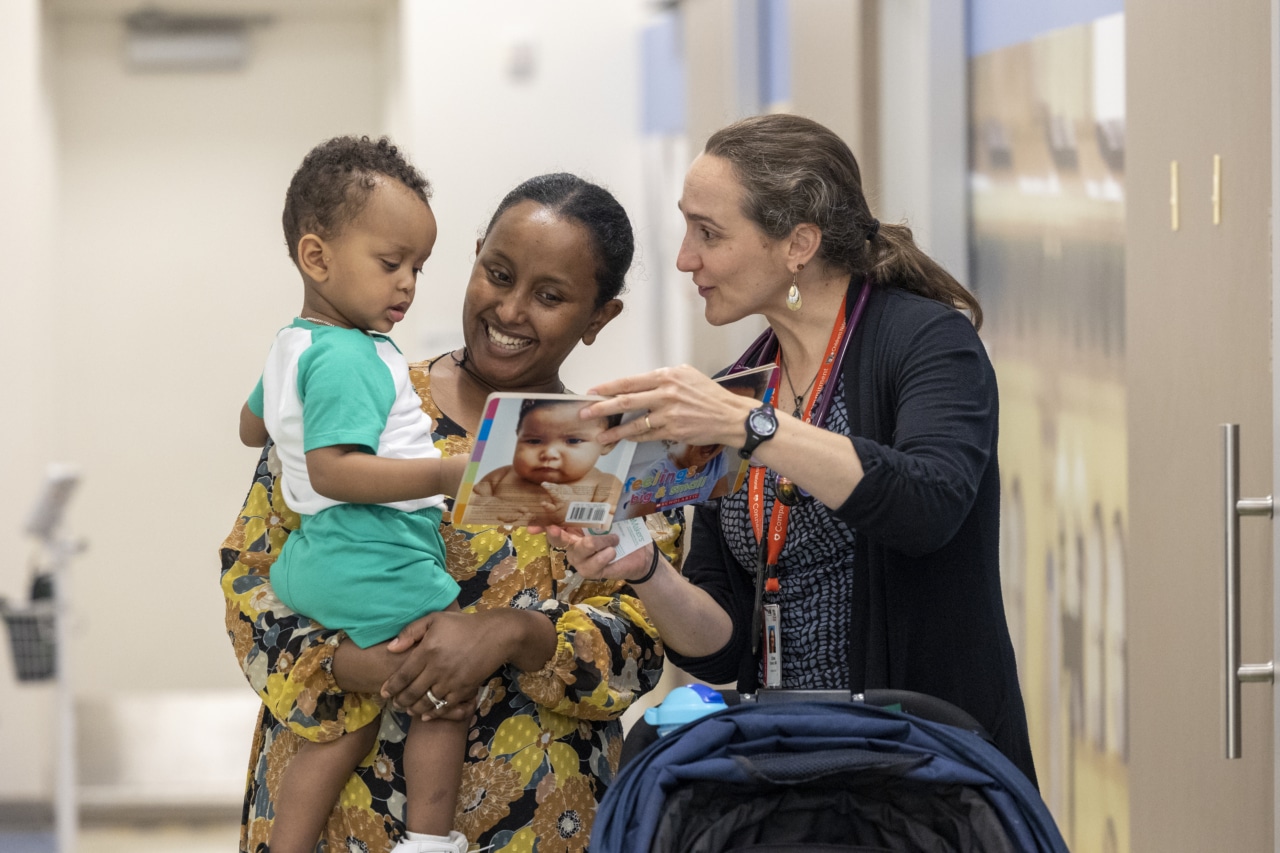Supporting staff members in how best to provide high quality, diversity-informed services to children and families is a critically important skill for program leaders.
Infant and early childhood mental health (IECMH), or healthy social-emotional development in very young children, develops in the context of family, community, and cultural expectations. Culture—the shared implicit and explicit rules and traditions expressed through the beliefs, values, and goals of a group of people—is the keystone of one’s identity and shapes people’s understanding of the world (Kalyanpur & Harry, 1999). Supporting staff members in how best to provide high-quality, diversity-informed and culturally competent services to children and families is a critically important skill for program leaders.
Infant mental health and culture affect each other in complex ways, and are closely linked during a child’s first years of life. One’s culture not only determines how “healthy social-emotional development” is understood by parents and caregivers, but also defines the coping mechanisms, child-rearing beliefs, and expressions of love and nurturing that they may use to promote a child’s mental health.
What does it mean for a program staff to be diversity-informed? In essence, diversity-informed practice refers to a staff member’s ability to respect families’ beliefs and traditions and to look for creative ways to meet families’ unique needs. It requires that direct service professionals approach cultural differences from a perspective of openness, learning, and acceptance.
When this happens, staff members and parents are better able to understand one another and work together. This collaborative effort has a positive impact throughout the program. First and foremost, children’s needs are addressed appropriately. When the adults involved in their care work collaboratively, the relationships surrounding children tend to be positive, constructive, and supportive. This encouraging, open environment supports infants and toddlers as they grow, explore, and learn. In short, diversity-informed practice contributes to stronger relationships between staff and parents, which contributes to the healthy social-emotional development of infants and toddlers.
The ability to observe, listen actively, and respond flexibly to families can be challenging. When staff are not familiar with or do not understand a family’s culture, those challenges become even more intense. Leaders, however, can do much toward creating an environment of cultural competence. The tips listed here highlight specific ways that program leaders can enhance their staff members’ skills related to family and culture.
Tips for Promoting Diversity-Informed Practice Among Staff
1. Reinforce the important concept of individual differences. In any cultural group, there exist great differences between family practices, beliefs, and customs.
Avoid the “cookie cutter” approach to cultural competence, which assigns each culture and ethnicity a separate list of beliefs and behaviors. Substitute an approach which encourages staff to look at, listen to, and learn from each individual family. Responding in a way that reflects families’ particular needs is the true hallmark of diversity-informed practice.
2. Encourage staff to share stories about their own cultures.
Ask for volunteers to speak briefly at staff meetings about aspects of their culture (e.g., child-rearing practices), or invite staff members to share their culture and/or family’s way of celebrating a particular holiday or milestone (e.g., birth of a child, wedding).
3. Ensure that staff members who are not bilingual know and understand at least several basic phrases (e.g., hello, good-bye, thank you) in the language(s) represented by the families on their caseloads.
Often families themselves are the best resource in providing these translations. Bookstores, too, may be amenable to donating foreign language resources.
4. If your program uses the services of translators, help staff think about how they will establish a relationship and rapport with families.
Things like speaking directly to families instead of to the translator, maintaining eye contact with families while they speak, using body language—nods, smiles—to convey understanding help build trust and help families feel valued.
5. Being inclusive to families from different cultures or ethnicities often requires looking at the program with a new set of eyes.
Walk around your site, and look through your materials. What messages is the program sending to families? For example, one leader of a program serving both English- and Spanish-speaking families, realized that it might be best to hang a banner reading “Bienvenidos!” under the site’s existing “Welcome!” banner.
6. Encourage staff members to explore their own cultural beliefs, practices, and assumptions in supervision.
Open-ended questions and observations (e.g., “Tell me more about why it’s best to start potty training at 3 years old.” or “You seem surprised by this parent’s request that we use a sling to carry her child. Let’s talk about that.”) can help to stimulate discussion and enhance staff’s self-awareness.
7. Provide training to staff in the role that culture plays in a child’s development.
By understanding how culture may impact our own and others’ perception of what “normal development” or “developmentally appropriate practice” is, staff members become more able to individualize their responses to family’s needs and requests.
8. Solicit songs and games from families and staff from their home cultures.
Ask families and staff to provide bilingual labels for items found in the program.
9. Ensure that all pertinent materials used by the program are available in the home languages of the families served.
Often, university foreign language departments can provide low- or no-cost translations.
10. When food is served at a program-sponsored event, ensure that it is sensitive to the cultures of the families in the program.
Beyond adding new dishes, think about other practices families might have around eating. For example, do families have certain religious or cultural requirements about how meat is butchered or prepared? Are any families vegetarian? How are traditions around eating the same or different for the families in your program?
References
Kalyanpur, M., & Harry, B. (1999). Culture in special education: Building reciprocal family-professional relationships. Baltimore, MD: Brookes.




